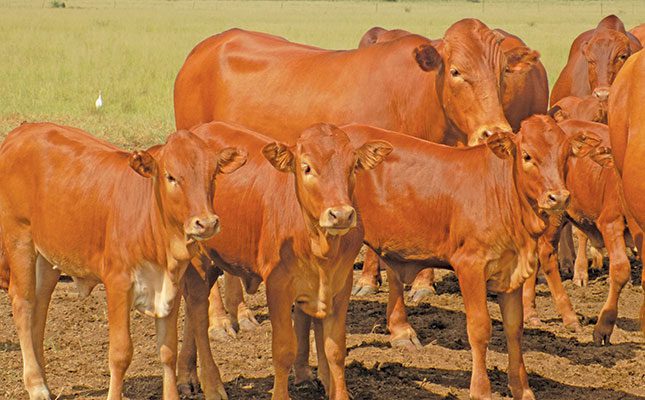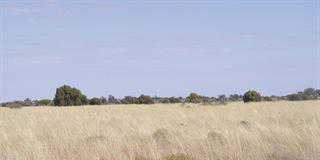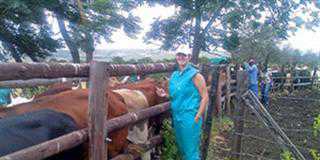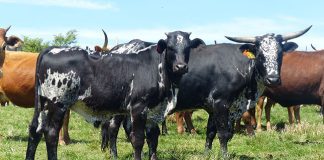
Photo: FW Archive
What is plasticity in cattle?
Phenotypical plasticity is the ability of an individual animal to change in response to stimuli or inputs from the environment. The response may or may not be adaptive, and it may involve a change in morphology, physiological state, or behaviour, or a combination of these. The phenotype is all of the physical characteristics of an organism other than its genes.
How is plasticity determined and measured?
Several analytical models are used to explain the genetic basis of plasticity responses. The main and not mutually exclusive ones are:
- Over-dominance. Here, the plasticity is an opposite function of the number of heterozygous loci. Heterozygous, as related to genetics, refers to having inherited different versions (alleles) of a genomic marker from each biological parent. Thus, an animal that is heterozygous for a genomic marker has two different versions of that marker.
- Pleiotropy. This is the phenomenon of a single gene influencing two or more
distinct phenotypical traits. In this case, plasticity is a function of the differential expression of a gene in different environments due to some pleiotropic effect. It refers to the influence of a gene on multiple and partially unrelated traits. - Epistasis. This refers to the interaction between genes that influences a phenotype. The plasticity may be due to the epistatic interaction between genes determining the degree of response to environmental influences and others causing the average expression of a trait.
- The infinite-dimensional model. This involves a mean function giving the average value of the trait over environments, and an additive covariance function is specified. In mathematics and statistics, covariance is a measure of the relationship between two random variables.
Is there a difference between adaptability and plasticity, and if so, what is it?
Yes, there is a difference. Animals respond to different environments by changing how they act, look or function. When these responses improve the chances of survival, we call them adaptation.
Plasticity, on the other hand, is usually thought to be an evolutionary adaptation to environmental variations that is reasonably predictable and occurs within the lifespan of an individual animal, as it allows the animal to ‘fit’ its phenotype to different environments.
Tell us more about plasticity in Afrikaner cattle.
A short preliminary study was carried out at the Agricultural Research Council’s Animal Production Institute to evaluate plasticity in Afrikaner and Nguni cattle. The two traits measured were birthweight and corrected 205-day weaning weight. It was clear from these preliminary results that the breed-direct effects on birthweight varied from year to year, and were possibly influenced by climate.
There also appeared to be large variations between breed-direct effects and 205-day weaning weights, with the Afrikaner showing less variation than the Nguni. This demonstrates low plasticity in the indigenous breeds, indicating possibly more tolerance to variation in climate.
Why is the breed so flexible?
The Afrikaner is amongst the oldest indigenous breeds in South Africa. It was developed from cattle owned by the Khoikhoi people during the 17th and 18th centuries. By the end of the 18th century, settlers in the Southern Cape had developed the Afrikaner into a well-defined breed adapted to extensive production systems. It was valued for its exceptional abilities as a draught animal, and for its meat and milk production under extensive farming conditions and in adverse climates.
How important is the plasticity of the breed in the light of climate change and its effects?
Climatic variables encompass many factors, including annual average temperature, temperature range, quantity and intensity of rain, humidity, and the relation between the humidity and temperature of a specific geographical area. The negative effects of climate change have forced breeders to employ measures to aid mitigation and adaptation.
Plasticity is of utmost importance for livestock species with a long generation interval, as evolutionary responses via natural selection may not produce change fast enough to mitigate the effects of a warmer climate. This will gain greater importance, especially in sub-Saharan Africa, as temperatures are set to rise due to global warming.
Are specific genes linked to plasticity?
There are a number of candidate genes associated with adaptation of ruminants during periods of heat stress. The genes encoding leptin, the thyroid hormone receptor, insulin-like growth factor 1, and the growth hormone receptor are all associated with the effects of heat stress on the physiological pathways of domestic animals such as dairy cows, beef cattle, buffalo, poultry, pigs and horses.
Selection and experimental evolution approaches have shown that plasticity is a trait that can evolve under direct selection, and it has a correlated response to some specific traits. New breeding goals should therefore be defined for the potential of livestock species to acquire plasticity for adaptation to climate change.
Which functional traits are representative of plasticity in a cattle breed?
The traits of economic importance are feed intake, growth (average daily gain), weaning weight and birthweight.
How does a beef cattle producer stand to benefit from the Afrikaner’s plasticity, not only in South Africa, but on the continent as a whole?
We’re investigating whether data such as maximum temperature, seasonal rainfall, length of the growing season, the temperature-humidity index, and the number of heatwaves per season to ascertain whether these factors can be linked to the plasticity expressed by different genotypes. According to the preliminary results, the Afrikaner seemed to perform well, but no conclusive recommendations can may be made at this stage.
What other indigenous South African breeds are similar to the Afrikaner in terms of plasticity?
The Nguni seems a close second to the Afrikaner, although more studies will be carried out in the near future to further investigate this. A new study will look at 12 crossbred beef cattle and three purebred beef cattle breeds and their plasticity under heat stress in a feedlot setting. The traits of interest to be measured will be feed intake, growth and weights.
Email Georgette Pyoos at [email protected].











